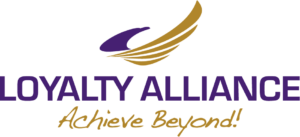In my last posting, I gave insight into how to change people. One of the seven points was to “define internal positioning,” which I also said was considered a “luxury item” by many people. In this posting, I hope to explain why taking the time (guided reflection) to define and document internal positioning at two levels can benefit people throughout the organization.
In a nutshell, internal positioning is the process of documenting who and what the organization is at three levels – the organization as a whole and the individual departments. Once the documents are created, they should be communicated throughout the organization and maintained as information changes.
Level #1: The Organization
Most large organizations have an internal communication and positioning guide, while most small and medium-sized companies do not. The communication and positioning guide is the principal repository for information that defines and describes who and what the organization is. The wording is precise and deliberate since many subsequent documents are created using the text. Items such as catalogs, press releases, website text, company presentations, and annual reports might contain verbiage from the communication and positioning guide (CPG). The CPG often highlights products, taglines, and product benefits. The CPG might also include information on the competition, company philosophies, and industry trends.
An organization-level CPG gives everybody a single source of information and maintains focus and clarity.
Level #2: The Departments
The next level that merits developing and disseminating CPGs is the department level. A couple of examples of how a CPG at the department level proves to be a helpful tool are as follows:
The New Employee: When a new employee enters a department, a CPG, including names, terminology, significant processes, special policies, workflow diagrams, org charts, internal customer information, and other topics, will reduce the employee’s training time. For example, the new employee could read and digest the org-level CPG and the department-level CPG to get a global understanding of the two levels. The terminology and acronyms that current employees use freely and without explanation would no longer be totally foreign to the new employee. Having process flows on paper, and an org chart to refer to would provide a visual that many people need. The CPG would also ensure consistency regarding information being presented to new employees.
Department Alignment: For senior management, having department-level CPGs effectively keeps departments properly aligned and focused. By comparing the CPG from each department, a senior manager can identify duplication of activity or resource, inefficient processes, conflicting priorities, or policy issues, all of which need addressing.
Outcomes of keeping things aligned:
- Keep everybody on the same page.
- Communicate how all the employees and departments fit together to support the organizational goals and vision.
- Reduce training time with new employees as they use the benchmark documents to learn various aspects of the organization, understand how their department fits into the overall organization, and realize how their position is part of the big picture.
Best Practices:
- Begin with the organizational level document – create the vision and framework for the departments. Review and revise every 6 to 9 months.
- Have each department create its positioning documents as a department, then have senior management review them to ensure all critical information is accurate. Review every 6 to 9 months as the organizational version is updated.
In summary, people want to feel they contribute positively to their organization’s goals and future. By developing and maintaining positioning documents at each level – organization and departments – understanding how and where employees add value to the organization become obvious. Need help with CPG document creation? Let me know in the comments section below
I hope you found this to be useful. Post a comment below, and be on the lookout for my next post when I begin talking about the three Ps at the root of both change initiatives and problems – People, Processes, and Planning. I’ll discuss the P nearest and dearest to your employees’ hearts – People (i.e., Themselves!)
Until next time!
- Essential Elements of Change Readiness - January 31, 2025
- Essential Elements of Change Readiness - January 23, 2025
- 7 Tips on How to Change People - January 9, 2025

